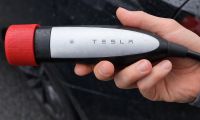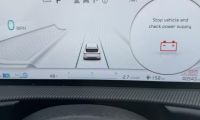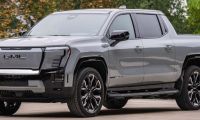Back at the beginning of the 1900s we had gas cars, electric cars, and steam cars. By the 1930s we were down to just gas cars, steam was for locomotives and some generators, and electric power was for smaller vehicles like forklifts and golf carts (though initially many of these were gas as well). Gas cars reached a point where other types of propulsion couldn’t compete. Stream was simple but took a long while to build up and the boilers could explode if they had a weakness or developed too much pressure, and lead-acid batteries, kind of sucked for range and charging times though women, who mostly were homemakers back then, loved them for their reliability and relative simplicity (driving an old steam or gas car was far more complex then just flipping a switch and pushing a peddle).
But now Electric Cars are advancing significantly, already they are able to outperform gas cars in straight line performance, they are cheaper to use (if you charge at home), and once the old technology is purged from them, currently they are blend of Gas car tech and electric car tech, they should be much more like an appliance to maintain than a gas car could ever be because they are vastly less complex.
I think what will kill the ICE car (Internal Combustion Engine) is a battery range of 1,000 miles.
Why Range Will Kill Gas Car
Right now, the average range of an electric car is pretty modest at around 200 miles. Since the average person drives 1,200 miles a month this means they need to charge the car at least 6 times a month today and many people don’t have garages and get nervous when their car isn’t fully charged so most of us end up charging our cars every night.
This if fine and even workable if we don’t take the car on trips, have a dedicated garage with a Level 2 charger, and a commute of around 50 miles (and can remember to plug the car in when we get home). But a lot of people drive farther than that to work, like to go on road trips (public chargers are both still uncertain and expensive).
In addition, even with a powerful ChargePoint Flex Charger, it’ll still take over 10 hours to fully charge the car, and on a public charger closer to 30 than 15 minutes while cooking the battery with a lot of heat. Now if you are OK with 80% charge you can increasingly get there in closer to 10 minutes on a powerful Level 3 charger but most of us aren’t comfortable, given these charging stations tend to often be broken, on taking a trip and only charging to 80%.
1,000 Mile Range Will Be The Game Changer
While the average trip a car takes is below 16 miles, the average distance a person takes on a long trip is 284 miles and to charge at home that means they’d need a car with 600 mile range to make that round trip.
By the way this supports the idea that a hybrid, if you want to stay on electric power, needs at least 40 miles of electric range to use little or no gas. But for an electric car as a primary car, you’d use it on trips and just charge at home you’d need 1,000 miles because you’d want plenty left over to drive at the destination. It works like this 600 miles round trip and then 5 days at 16 miles gives you 660 miles minimum, but you’d want an extra 240 miles to avoid range anxiety which gets me to 1,000 miles.
At 1,000 miles most people only need to charge their car once a month, so if they forget to charge, can’t charge at home, or need to take a normal trip you’re covered. And, with this range, I’d argue better than 99% of the drivers will never again experience range anxiety.
Wrapping Up: Aptera
Currently only the Aptera is pushing this 1,000-mile range limit and it gets there mostly through efficiency not by massively increasing size or energy density of the battery. The issue with the Aptera is that it is a very small and light car, and it looks really different than other cars on the road and most of us would not be comfortable with it, but right now it is the only car that is able to demonstrate this massive range.
But batteries are in test that could take a more common car design to this range, and potentially in the future beyond that range. This battery, or one like it, is expected to be in production cars by 2029 or around 5 years from now, and I think, that introduction, assuming it hits its milestones (often tech efforts like this don’t) will make gas cars finally obsolete. Now that doesn’t mean that suddenly they’ll vanish, that will take a decade or more after this, but this is when it will be clear that ICE cars aren’t competitive and the real move to electric vehicles will commence.
Rob Enderle is a technology analyst covering automotive technology and battery developments at Torque News. You can learn more about Rob on Wikipedia, and follow his articles on Forbes, on X, and LinkedIn.













Comments
Predictions of 1,000 mile…
Permalink
Predictions of 1,000 mile EPA range batteries are like Elon Musk's FSD predictions. "They'll be here next year." There have been many high energy density chemistries announced since Toyota's 2009 amazing new battery announcement with an estimated 2015 availability date. Yet we are still waiting for an economical, mass production battery to emerge. With the production of 2029 model year cars less than 4 years away, expecting such a battery to be generally available in by 2029 is very optimistic.
I think your advice for today's consumer is well given. We have a 2023 Genesis GV70 EV which give us about 225 miles of suburban driving range. We use it as our everyday vehicle. We've never used anything but our Level 2 home charger in the 16 months we have owned the car. Our antidote for range anxiety is our 2013 Mercedes E350 which we use for longer trips .
We have an E-Tron GT EV and…
Permalink
In reply to Predictions of 1,000 mile… by Ron Krikorian (not verified)
We have an E-Tron GT EV and a Volve XC60 recharge and similar to you, use the Volvo for distance.